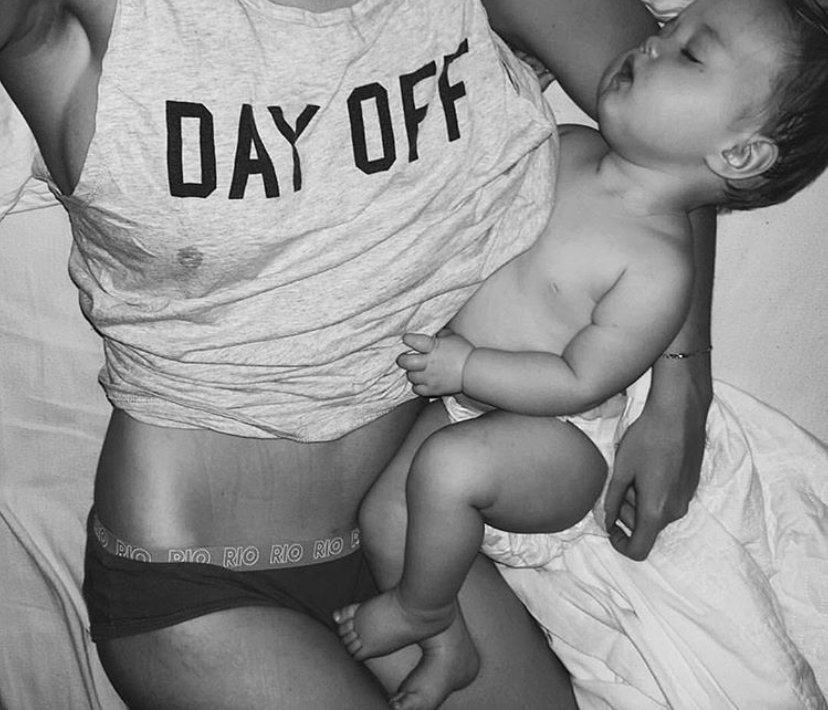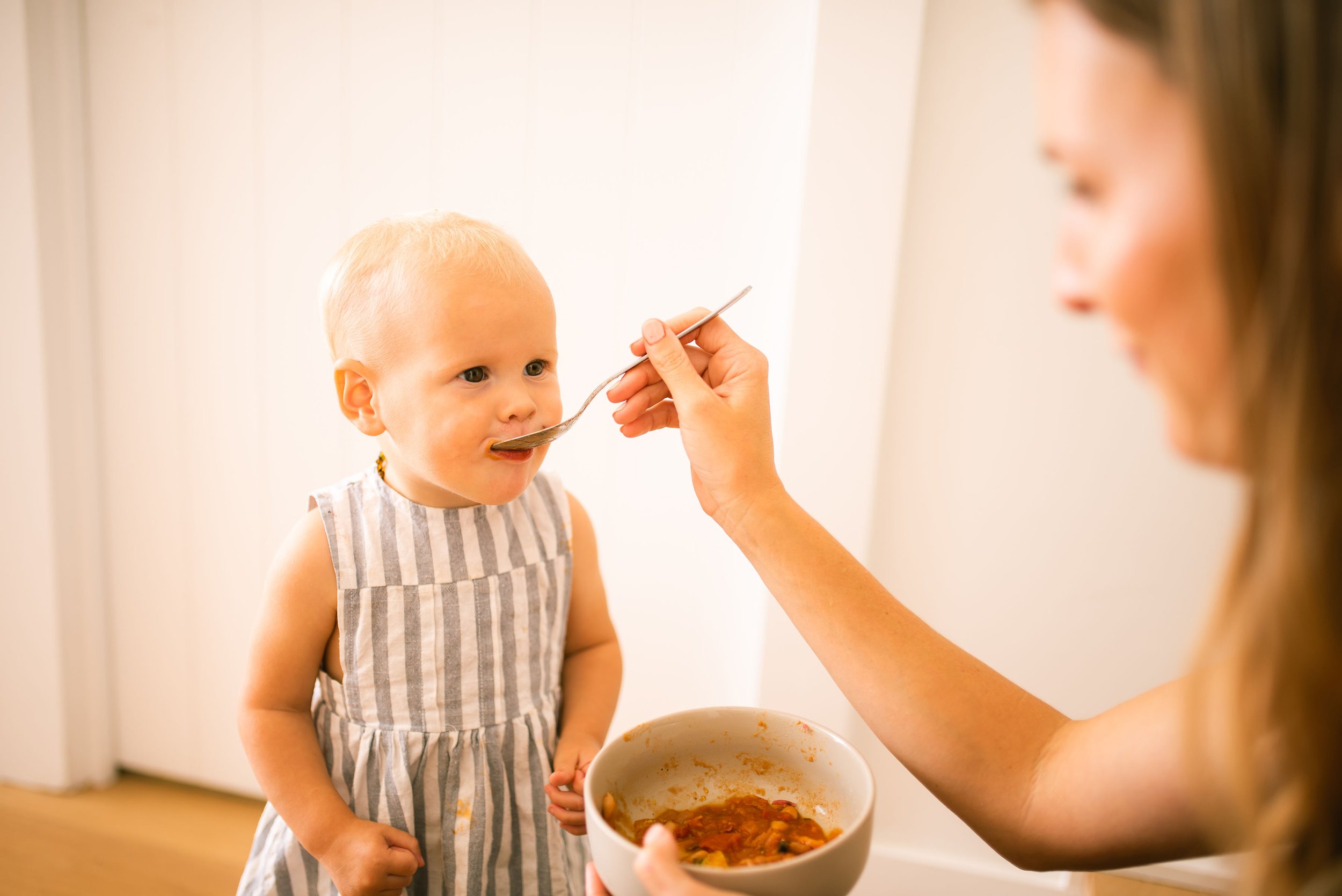Gentle night weaning – a guest post by Kristy from The Sleep Teacher
Photo via @daniloxton
Like anything sleep, night weaning does not need to occur at a set age or weight. Night weaning can occur when you and/or your baby are ready. If you are feeding multiple times overnight and this is working for you and your little one, then there is no reason to make any changes.
BUT, if you find the constant night wake ups and broken sleep is not just affecting you, but also your little ones mood and appetite, then it maybe time to wean.
There are so many different guides out there telling you when your baby should no longer need a night feed and when they should be able to sleep through the night. These are just that, guides. They are not tailored specifically to you or your child and what you feel is right.
For a lot of Mums (myself included) the hesitation to night wean comes because we want it to be baby led and we feel that they must still need those calories to sustain them through the night.
I always assess the following with my clients before we look at night weaning.
-
Are they over 9 months of age?
-
Is their weight and growth thriving?
-
Are they having enough milk feeds of a day to sustain them overnight?
-
What is solid portion size like?
-
Are they consuming protein as well as carbs?
-
Are they not interested in the most important milk feed of the day? (morning milk feed on wake up)
-
Are they using the breast for nutritive sucking (feeding) or non-nutritive sucking (dummy/comfort)?
Again, every child is different and some will drop night feeds at 8 weeks, some not until 3 years, it really depends on your child and what is working for you both. Please don’t compare your bub to your friends.
This checklist above, helps me to go through and assess if there are certain factors of a day contributing to the excessive or extra night feeds. If there is, then we will 100% address these before we work on the night weaning. This offers Mum and myself the reassurance that throughout the day their little one is receiving the calories and nutrients they need to sustain them throughout the night and we can be confident that we can start gently and gradually weaning down their night feeds. If a child is ticking all the above boxes and still having multiple night feeds then more then likely this is more of an emotional/physical connection that needs to be met.
One thing I always say to my clients is that “there is no point starting to try and make changes unless you are 100% ready for these changes”. If we start to make changes then go back on them, it only confuses our little ones and makes the weaning process much harder (for Mum and bub) as their association becomes stronger.
Making the decision to night wean more often then not is a very emotional one for us Mums, especially if this had been routine for you both for so long.
When we breastfeed there are two feel good hormones that are released, they are prolactin and oxytocin. Both of these hormones give you a feeling of calmness. If we were to stop feeding cold turkey this sudden decrease of these hormones would leave us feeling teary and emotional. (As if this isn’t already hard enough!!)
This is why I recommend weaning gradually if you and your baby have been used to this overnight routine for sometime.
I would also like to mention that if you have been considering introducing formula to help your little one sleep longer as opposed to night weaning altogether. This isn’t going to solve your problem.
A lot of parents (myself included) think that by introducing formula it will help your little one sleep through the night. But introducing formula to a breastfed baby down the track, just so they will sleep through the night is not the answer.
Why? This is because formula is actually a lot harder to digest then breast milk so this digestion process can disrupt sleep overnight. We then end up feeding more in a bid to resettle.
I’m all for FED is best and I am in no way trying to say you shouldn’t formula feed at all! Go ahead and do what works for you. I’m not saying you shouldn’t use formula, (I did!) I’m just saying that introducing a bottle of formula to a well established breastfed baby just so they sleep through the night is often not your answer. It will more often than not actually disrupt sleep, rather than improve it. I am offering this advice so that it may help someone out there who has recently introduced a formula bottle overnight, but is not sure why their little one is still slightly fussy and restless. This may be your reason.
If you are at the end of the cross roads and you feel the night feeding journey is coming to an end, there are ways to do this gently.
So, how do we do this gently and gradually?
First of all, i recommend slowly conditioning your child to a comforter so that this will in time become their sleep association, rather then your breast. A comforter is sustainable longterm and does become like their little piece of home wherever they need to go, dancer, grandparents etc. It will make their ability to sleep anywhere seamless. Introducing a comforter will take a few weeks. I suggest allowing 4 weeks for them to form an attachment to this before starting the weaning process. Comforters should be made of breathable muslin style material and handkerchief size. I recommend placing this in your child’s hand whilst feeding this will help them associate it with falling asleep and also help get your scent on it. You may even like to carry it around and sleep with it yourself before introducing it to your child, this will also help the comforter smell like you.
Introduce some white noise. White noise would have to be one of my favourite sleep associations and it really does make a child’s ability to sleep longer periods and consolidate sleep cycles much easier. I recommend a consistent sound like rain. When introducing white noise, please keep in mind it does have to be quite loud to be effective, around the level of a running shower. I would encourage you to turn your white noise on as part of your wind down routine (I will take more about this below) and use it continuously for the duration of sleep. Why is it so effective? Not only does it help to act as a buffer for the noises that go on in our houses, siblings, dogs barking, phones ringing etc. It also helps a child feel comfortable in their environment. If we start the white noise during our wind down, our little one will fall asleep hearing this sound and then when they transition between sleep cycles they will recognise the same sound they had heard and this will help reassure them as they transition into another sleep cycle.
Implement a really consistent wind down routine. Even if you are feeding to sleep, a wind down routine is really important. By creating a wind down ritual and introducing this into their day, it will prompt your little one to know what is happening and what will happen next. It does not need to be anything lengthy, just something as simple as going into their room, turning on the white noise, getting into their sleep bag, having a story or song and saying your usual goodnight phrase. IF your child is older enough to understand, it may also help at this point, when saying goodnight to them, also say that boobies or bottle are going to bed too and say goodnight.
When done repeatedly, this will all be enough to naturally prepare your bub for sleep. This wind down should be done approximately 10mins before being placed into the cot. Overtime, this wind down will become reassuring for your little one and you will more than likely be able to start feeding before the wind down and placing them into the cot awake and settling using your voice and touch.
I would also try and set yourself some realistic feed times overnight. 4 hourly is more then realistic for a baby who meets all the above criteria so I usually recommend using this as your guide overnight. For instance feed your little one before they go to bed at 6.30pm, then the next feed would be 10.30pm and 2.30am if they woke. We wouldn’t actively wake them for these feeds, more use these as a marker to help put a plan in place. I find with a plan we have a more likely to be consistent. If they were to wake earlier then the 4 hour mark, I suggest resettling with their comforter, voice and touch. Yes your little one may put up a fight, but I promise after 2-3 nights of consistency you will see improvements.
These 4 steps are really important steps to implement and be consistent with for a good few weeks before you start your night weaning (if you want the process to be as seamless as possible).
Once your comfortable with how your little one is is responding to the above 4 steps and feel they are starting to associate this with sleep it is time to move onto the night weaning.
Once your little on is established on just the 1-2 night feeds I suggest reducing down the time at the breast or bottle. We do this by reducing down the time at the breast by 2 minutes every night or 30mls of formula every night. This process not only helps your little one gradually regulate their calories from night to day, it also gives you reassurance they aren’t being deprived of substantial calories overnight.
From here, its when we can look at weaning altogether.
Feed your child as usual, when you notice they are starting to slow down with the sucking and swallowing and the sucking is becoming more of a non-nutritive suck and its apparent they are falling asleep, quickly take your boob or bottle out of their mouth and leave your finger in for a minute or 2. Gently press down slightly to apply a little pressure to their bottom lip also.
Once your little one is in a nice deep phase of sleep (you will notice their little eyes moving under their eyelids) you can remove your thumb from their mouth and place it back on the bottom lip so their is a small amount of pressure (just enough so they feel you and are still there). Once you are confident they are asleep you can place them down with their comforter nice and snug next to them (ideally it should still be in their hand).
If you need to apply a little patting an shushing when placing them into their cot because they are stirring then please do.
After a few days (3-5) of doing this try to place your child into the cot in a light phase of sleep and use your shushing and patting to settle.
Then from here after another (3-5) days we can move onto removing them from the breast or bottle less and less drowsy.
Please, please, please be mindful that when we try to wean our little ones there will be periods that your little one may not settle was quickly and as easy as they normally would have with a quick feed and back to sleep. Yes your baby will most likely cry, but we are NOT in anyway letting them cry it out. You will be with your baby the entire process, guiding them and teaching them a new way to fall back asleep. They will in no way feel unloved or neglected.
I can promise you that it will seem harder before it gets easier. But I can also promise you, that with a consistent approach you will achieve your desired outcome and you and your little one will be much more rested.
This process will take time, patience and consistency but it really is as gentle as you can get.
If you feel like you need more guidance around sleep, please contact Kristy here






+ show comments
- Hide Comments
add a comment